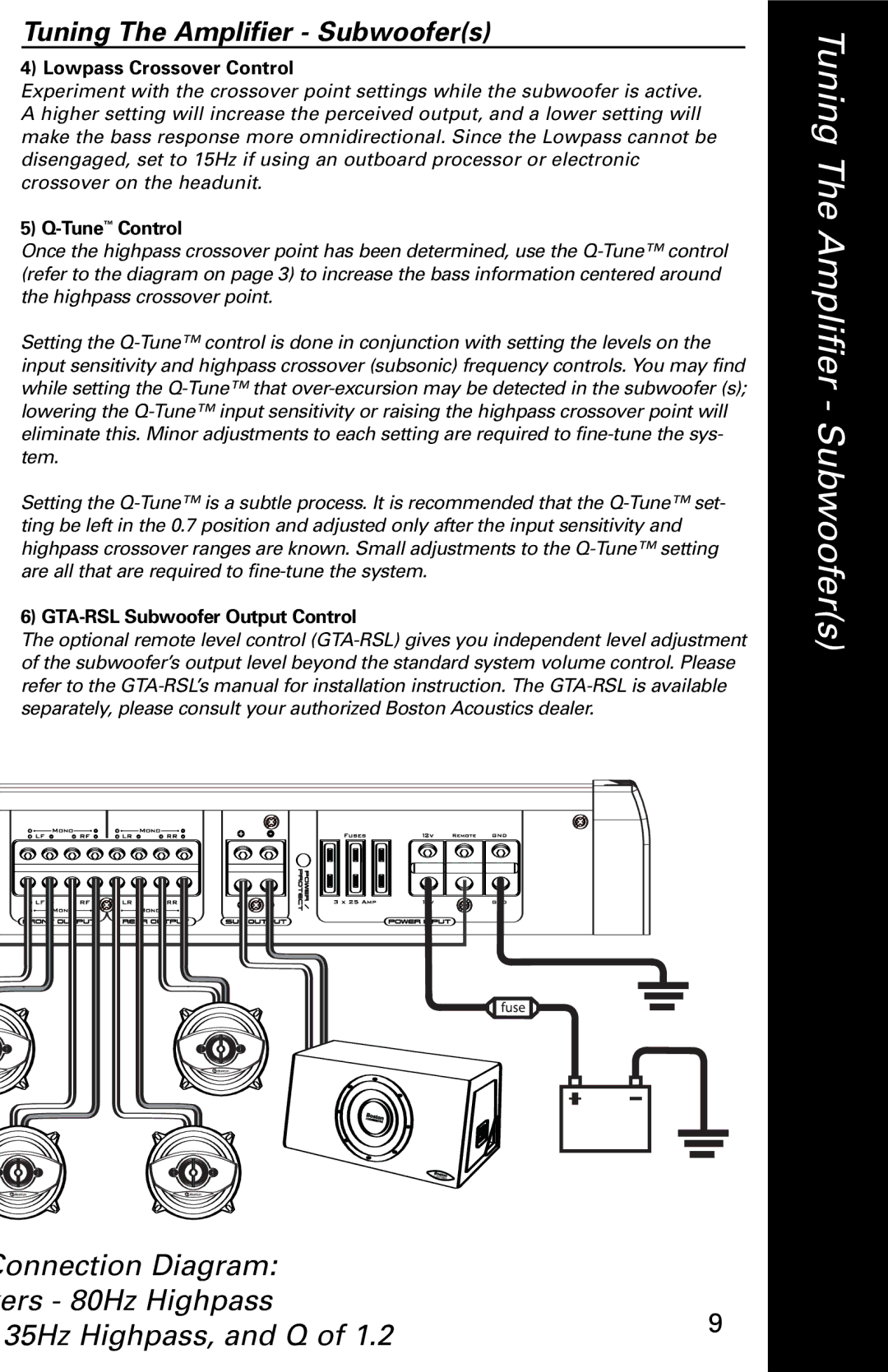1005 specifications
Boston Acoustics 1005 is a highly regarded speaker system that has garnered attention for its superior sound quality and innovative design. Known for its exceptional audio performance, the 1005 stands as a testament to Boston Acoustics' commitment to producing high-fidelity audio products.One of the main features of the Boston Acoustics 1005 is its compact design, which allows it to fit seamlessly into various home environments without sacrificing sound quality. This sleek speaker is engineered to deliver powerful bass, detailed midrange, and crisp highs, making it a suitable choice for music enthusiasts and home theater systems alike.
The 1005 utilizes advanced driver technology, including premium woofers and tweeters that ensure a wide frequency response. The woofers are designed to recreate deep bass tones with clarity, while the tweeters provide a smooth high-frequency performance. This combination results in a balanced sound profile that can easily fill a room, allowing listeners to enjoy their favorite music and movies with immersive audio.
Another notable feature of the Boston Acoustics 1005 is its versatility. The speaker can be used in a variety of applications, from bookshelf setups to part of a larger surround sound system. This flexibility makes it an excellent choice for audiophiles looking to enhance their listening experience, whether they are watching films or enjoying music.
In terms of design, the Boston Acoustics 1005 exhibits a modern aesthetic that can complement various décor styles. The stylish cabinet construction not only adds visual appeal but also minimizes resonance, ensuring that unwanted vibrations do not interfere with sound quality.
Furthermore, Boston Acoustics has incorporated advanced acoustic technologies in the 1005 to enhance performance. These include precision tuning and optimization protocols that are aimed at maximizing speaker efficiency and minimizing distortion. This attention to detail ensures that the 1005 delivers accurate sound reproduction across different genres of music.
Overall, Boston Acoustics 1005 stands out in the competitive speaker market due to its combination of compact design, advanced audio technologies, and versatile application. With its outstanding sound quality and sleek aesthetics, it provides an enriching audio experience suitable for home use, making it a worthy investment for anyone looking to upgrade their sound system.

